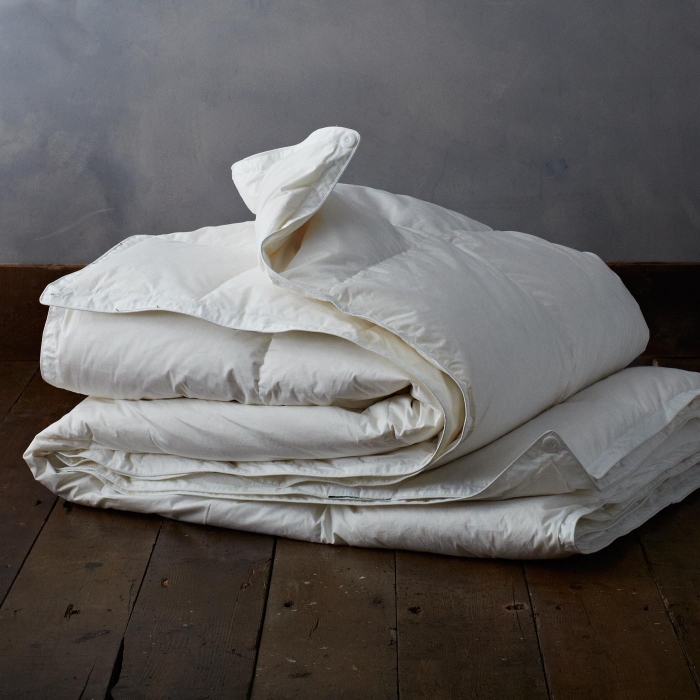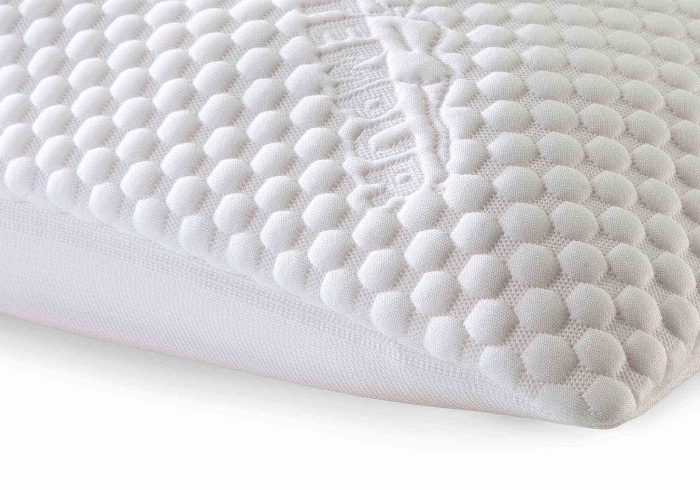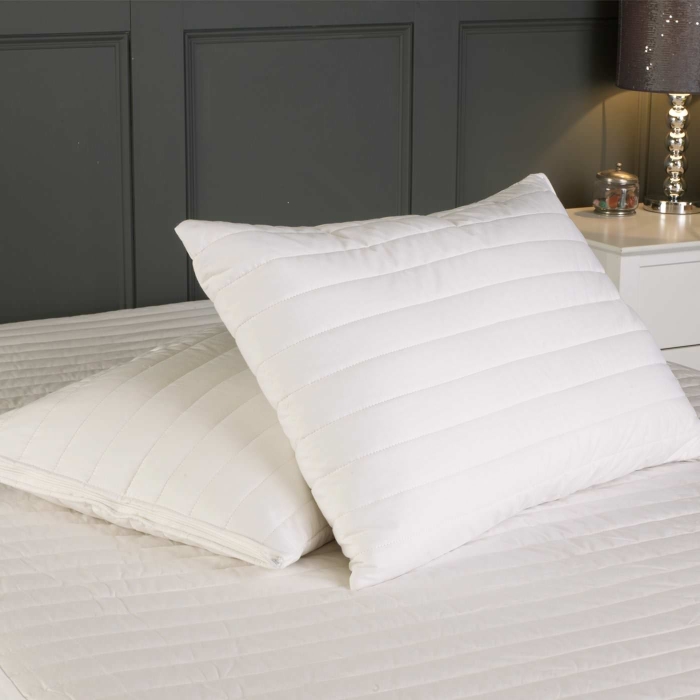SLEEPING ON A CLOUD - PART 3
 Image credit: Soak & Sleep
Image credit: Soak & Sleep
Now that we’re all sorted on bed frames and mattresses, let’s talk about the soft stuff that really turns that bed into a cloud! If you missed out on the last 2 parts of this Sleeping On A Cloud series, you can catch up here and here.
1) Duvets
 Image credit: Soak & Sleep
Image credit: Soak & Sleep
Duvets can be an expensive purchase, but if chosen wisely, they can last for 20 or 30 years. With such a huge variety available, duvet shopping can be a bit overwhelming! If you’re in that camp, then I hope my research will be of some help!
Size
Let’s start with the easy one. The normal thing to do is to get a duvet the same size as your mattress (as in a kingsize duvet to go with a kingsize bed). That said, if you have a duvet thief of a husband like me (apparently the “hug and roll” technique runs in the family…), then go for one size up!
Natural vs synthetic fillings
Synthetic fillings are cheaper, great if you suffer from allergies, and are easy to look after as you can wash them more frequently. However, they generally have a shorter lifespan compared to natural duvets.
Natural fillings are often duck or goose feather and/or down. They offer a more luxurious feel, and as with most natural fibres, are more breathable.
Are geese better than ducks?
Yes, well, sort of (they definitely taste better!). Goose feathers and down are lighter in weight than those from ducks but still offer the same level of warmth, and hence are more expensive. But what’s perhaps more important, is to consider the down-to-feather ratio.
Feathers are the tougher outer layer that you see on a bird. They have a spine down the middle (called a quill), the stuff that pokes through your duvet cover sometimes. Down is a light and fluffy layer underneath the feathers. The higher the down content, the fluffier your duvet will be.
Tog rating
This one seems to confuse a lot of people. Tog rating measures a duvet’s thermal insulation effectiveness, regardless of what material it’s made of. I repeat, it does NOT matter what material it’s made of! A 9 tog hollowfibre duvet is just as warm as a 9 tog goose down duvet. All it means is that more filling is required to give the same rating if the synthetic material isn’t as insulating.
It is generally recommended that you use 3 - 4.5 tog for summer, 7.5 - 9 tog for spring/autumn, and 10.5 - 13.5 tog for winter.
We have a John Lewis 70% duck down, 30% duck feather, 13.5 tog all seasons duvet. I chose this over a 20% goose down, 80% goose feather one at a similar price as it feels softer and fluffier. It actually comes in two separate duvets - 4.5 and 9 togs - that you can use separately or together (using poppers) for colder months. It was a special buy promotion item and doesn’t appear to be available on their website anymore, but they do have a very large range of duvets!
2) Pillows
 Image credit: TEMPUR
Image credit: TEMPUR
I’ve lost count of how many cheap pillows I’ve had. I think my personal best was a pair for £3. Fast forward a few years, with student life firmly behind me, I finally invested in a nice pillow! I’ve used a TEMPUR water pillow in the past, but didn’t really get on with it, so I was very pleasantly surprised when I came across the TEMPUR Cloud pillow.
It’s not cheap (cheapest I’ve seen is about £75 online), but it is so aptly named. It is down to personal preference of course, but I can honestly say I’ve had better sleep in the last couple of months than I have in years. The pillow comfortably moulds around my head and neck, feels super soft, yet provides excellent support, even when sleeping on my side.
For the guest beds, I found these Luxury Hotel Collection Touch of Silk pillows in the House of Fraser summer sale. I would never have paid £100 for a pair, but they were on sale for £30. The sale is now over, but they are offering 70% off when you buy 2 or more eligible Luxury Hotel Collection products (which probably means they are never worth £100 anyway). I haven’t used them much myself (apart from a cheeky afternoon nap) but they got the mother-in-law’s seal of approval. So far so good I’d say!
3) Bed sheets
I generally go for 100% cotton sheets. I must confess though, I am (hopefully, was?) a sucker for high thread count. The higher the thread count, the more luxurious it is, right? Not necessarily… There are lots of articles on the myths of thread count, so I’m not going to go into too much detail here (are you even still reading this anyway?).
Thread count refers to the number of threads woven vertically and horizontally into one square inch of fabric, unless you’re in Australia, in which case it’s per 10 sq. cm. It is generally true that the higher the thread count, the softer the sheets, but only up to a certain point. 300 thread count used to be considered an absolute luxury, but it seems like companies are now selling thread counts in the thousands. They often achieve these crazy high thread counts through clever marketing tricks, or plain cheating. For example, they count the number of fibres that make up each yarn, rather than the number of yarns woven, or they weave extra threads onto the existing sheet to bump up the number. The former won’t actually affect the quality of the sheet, but the latter makes it thicker and heavier!
So, remember that thread count is only part of the puzzle. Other things to consider include fibre length, quality, and weave type, etc. Egyptian cotton is generally considered the best as the fibres are longer than other types of cotton. Longer fibres mean a stronger thread, and therefore a more durable fabric. The more common weave types are Percale which produces a flat, matte look, and Sateen (not to be confused with satin) which gives a silky smooth feel.
In terms of style, my favourites are hotel style white bed sheets, either with satin stripes, or a contrasting border. Here are some of my recent purchases:

1) Dorma 350 TC extra deep fitted sheet, from £19.99, Dunelm 2) Luxury 600 TC deep fitted sheet, from £18.55, Soak & Sleep 3) Classic 200 TC duvet cover, from £20, Soak & Sleep 4) Satin Stripe 400 TC duvet cover, from £23.45, Soak & Sleep 5) Luxury 400 TC Single Row Cord duvet cover, from £34, Soak & Sleep 6) Luxury Hotel Collection Satin Stripe 300 TC duvet cover set, from £150 (don’t forget the 70% deal!), House of Fraser
To my untrained hands, the difference in feel between the different brands and thread counts is marginal. Within the Soak & Sleep products, the 400 TC sheets definitely feel softer than the 200 ones, but the 600 ones are almost verging on being too thick. Overall, I’d probably say the Dorma 350 TC sheet feels the silkiest. I have washed everything 3 to 4 times, and so far everything has held up pretty well. With that said, a friend just told me yesterday that she wasn’t very pleased with the finishing on her Soak & Sleep sheets, so I guess I’ll have to wait a little longer to see!
 Image credit: Soak & Sleep
Image credit: Soak & Sleep
Before I say goodnight, I just want to share a couple of quick tips with you… 1) If you’re buying fitted sheets, make sure you check that the depth is enough to cover your mattress height. 2) Don’t underestimate the importance of mattress and pillow protectors. Removable covers not only help protect your health (provided you wash them regularly!), they also prolong the lifespan of your mattress and pillows, saving you money in the long run!
And that concludes this 3-part Sleeping On A Cloud series. If you’re still reading, thank you! I hope you’ve found the tips useful for your pursuit of a perfect night’s sleep. If not, then at least this massively long essay would have tired you out! ;) Night night! x